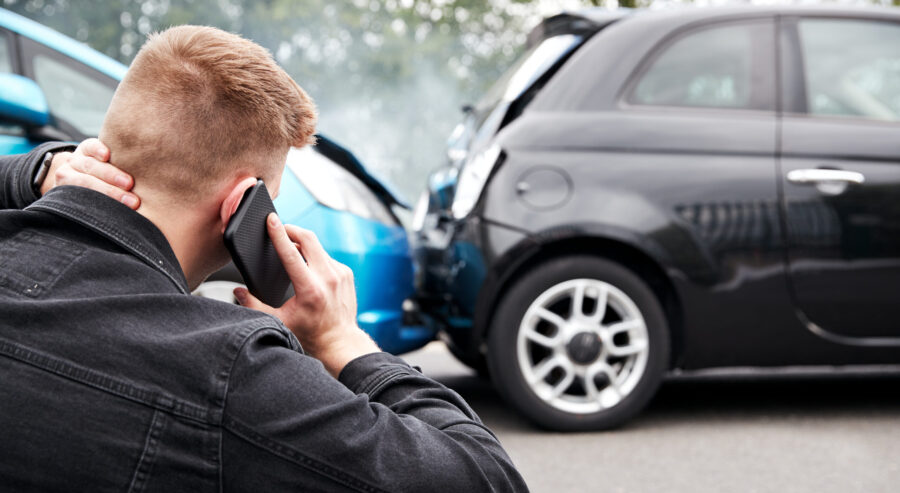Car accidents can be both physically and emotionally traumatic. Beyond the initial stress and shock,…
What You Need to Know About Spinal Cord Injuries in Car Accidents
By Mike Deering

Car accidents are one of the leading causes of spinal cord injuries, leaving countless individuals grappling with life-altering consequences. For residents of Virginia Beach, understanding the impact of spinal cord injuries and the legal pathways available is crucial for ensuring appropriate care, compensation, and justice. This blog provides an overview of spinal cord injuries caused by car accidents, guiding you through causes, symptoms, treatment options, and ultimately how to find a legal advocate who understands your needs.
Understanding Spinal Cord Injuries in Car Accidents
Spinal cord injuries (SCIs) can result from the immense force typically involved in car crashes. The spinal cord, a critical part of the central nervous system, transmits signals between the brain and the rest of the body. Any damage to it can lead to temporary or permanent physical and neurological impairments, significantly altering a person’s quality of life. These injuries often demand years of treatment, rehabilitation, and lifestyle adjustments, creating financial and emotional burdens for the victims and their families.
Car crashes are particularly dangerous due to the potential for abrupt impacts and rapid deceleration, which exert tremendous pressure on the spinal cord. While modern vehicle safety features have improved, they are not always enough to prevent injuries, especially in high-speed or multi-car collisions.
Common Causes and Risk Factors
Car accidents can damage the spinal cord in various ways. Rear-end collisions, rollovers, and head-on crashes are some of the most common scenarios leading to SCIs. These accidents often occur due to distracted driving, impaired driving, speeding, or inclement weather conditions. Even wearing seat belts—while a critical safety measure—cannot always prevent spinal injuries when the forces involved are severe.
Additionally, the type of vehicle, such as motorcycles or older cars without advanced safety features, can increase susceptibility to spinal injuries. Risk factors such as age and preexisting conditions like osteoporosis can also worsen the severity of the injury.
Understanding these causes and risks empowers individuals to take preventive measures. It also ensures that attorneys have a clearer understanding of how their clients’ injuries occurred, making this information foundational to both medical recovery and legal proceedings.
Types of Spinal Cord Injuries
Spinal cord injuries are typically categorized by the location of the injury and the extent of the damage. Medically, they are often divided into two broad types—complete and incomplete injuries.
A complete spinal cord injury results in a total loss of sensory and motor function below the injury site. This can lead to conditions such as paraplegia or tetraplegia, depending on whether the injury occurs in the lower or upper spinal cord.
An incomplete spinal cord injury, on the other hand, preserves some level of function and sensation below the injury site. These injuries vary greatly and can lead to unpredictable outcomes depending on the severity and specific section of the spinal cord that is impacted.
The spinal cord is further divided into regions—cervical, thoracic, lumbar, sacral—and the location of the injury determines the extent of functional impairment. For example, cervical injuries often affect mobility in all four limbs, whereas lumbar injuries primarily impair leg movement.
Symptoms and Diagnosis
The symptoms of a spinal cord injury are not always immediately apparent after a car accident. Sometimes, adrenaline masks pain, or symptoms develop over time as swelling or inflammation increases. Some individuals may experience paralysis or a loss of mobility in parts of their body within minutes, while others face chronic pain, tingling, or muscle spasms that slowly worsen after the impact.
Key warning signs include severe back pain, difficulty breathing, numbness, loss of bowel or bladder control, and weakness. Immediate medical attention is essential in the aftermath of any symptoms to prevent further damage and ensure timely intervention.
Diagnosing a spinal cord injury involves advanced imaging techniques such as X-rays, MRIs, or CT scans, along with a neurological examination. Early diagnosis can make the difference between limited recovery and permanent complications, as swift care helps stabilize the spinal cord and reduces secondary damages.
Treatment and Rehabilitation Options
Treatment for spinal cord injuries is complex and demands a multidisciplinary approach. Initial care typically involves stabilizing the spinal cord to prevent additional damage. Sometimes, this involves surgical interventions to repair fractures, relieve pressure, or stabilize the spine using rods or screws.
Once stabilized, long-term rehabilitation focuses on helping patients regain as much function as possible. This stage may include physical therapy, occupational therapy, and the use of assistive devices to improve independence. For individuals with partial injuries, rehabilitation often targets strengthening the unaffected areas.
Innovative technologies—ranging from robotic exoskeletons to nerve regeneration therapies—are also providing new hope for SCI victims. However, these treatments and ongoing care come at a significant cost, adding financial challenges to an already difficult recovery process.
Legal Considerations
Beyond the medical realm, navigating the legal aftermath of a spinal injury caused by a car accident is equally essential. Victims of these accidents might be entitled to compensation for medical bills, lost income, rehabilitation costs, pain and suffering, and other damages.
Virginia follows an “at-fault” car insurance system, meaning that determining liability is key to pursuing compensation. Gathering strong evidence such as police reports, witness statements, and medical records is vital in demonstrating how the accident occurred and why the at-fault party should be held accountable.
However, Virginia’s contributory negligence law makes this process more complex. If the victim is found even slightly at fault for the accident, they may be barred from recovering damages. This makes it crucial to have an experienced lawyer who understands how to combat these complexities and maximize compensation.
Finding a Spinal Cord Injury Lawyer in Virginia Beach
If you or a loved one has sustained a spinal cord injury due to a car accident, finding skilled legal representation is the first step toward building a case and alleviating financial burdens. A knowledgeable lawyer will not only fight to secure compensation but will also advocate for the long-term support needed for your recovery.
Deering Hedrick is a trusted law firm in Virginia Beach with extensive experience in car accident and spinal injury cases. The team is dedicated to providing compassionate yet results-driven representation, ensuring that every client’s voice is heard and their needs fully addressed.
We understand the emotional and financial strains these injuries bring, and we are here to help you achieve the justice you deserve. Call us today at 757-383-6848 for a free consultation and to begin your path to recovery.
Take the First Step Toward Justice
Spinal cord injuries from car accidents are life-altering. From physical limitations to financial strains, the road to recovery is fraught with challenges. But you don’t have to face them alone. Understanding the nature of your injury, accessing the right treatment, and securing skilled legal representation are crucial steps in rebuilding your life.
If you’re in Virginia Beach and need guidance, reach out to Deering Hedrick at 757-383-6848. With their commitment and expertise, you can focus on healing while knowing your case is in trusted hands.





